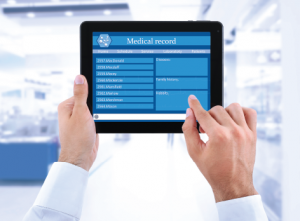
Africa Studio / shutterstock.com
The operations management team in healthcare practices is expected to have an effective coding compliance program in place that is continually evaluated and reevaluated. To accurately assess the program’s effectiveness, several outcome indicators must be measured, including error rates in the provider’s documentation and the electronic health record (EHR). Due to increased scrutiny by the Office of Inspector General (OIG), whose function is to supervise and guard the integrity of the Department of Health and Human Services (HHS) programs as well as protect the beneficiaries of these programs, physician practices must examine and evaluate risk areas.
The OIG report, Improper Payments for Evaluation and Management Services Cost Medicare Billions in 2010, gives clear instructions for the Centers for Medicare & Medicaid Services (CMS) to educate providers on coding and documentation requirements for E/M services, and to continue to have CMS contractors review E/M services billed for high-coding physicians as well as continuous review of E/M services that are paid in error.1 Due to the findings in the report, contractors initiated various programs to monitor documentation requirements for E/M services and, due to high error rates, began issuing prepayment reviews through the comprehensive error rate testing (CERT). Prepayment audits are costly to provider practices, because claims are not paid until they go through a comprehensive review. The OIG also indicated in the report that the most common documentation errors were caused by the copy-and-paste functionality in EHR systems.
In 2014, then OIG Inspector General Daniel Levinson suggested that guidelines should be developed for using the copy-and-paste feature in EHR technology. He further recommended that CMS direct contractors to use audit logs for investigations and provide additional guidance on detecting fraud in EHRs.2 The report and its findings called for the CMS to do everything in its power to prevent and stop the fraud and abuse that undermine the innovation of EHRs in the healthcare industry and risk overpayments from the Medicare budget.
Utilizing the copy-and-paste function for clinical documentation can save time for busy clinicians, but it also can pose a risk to the integrity of documentation. Physician practices, clinics and hospitals that utilize an EHR system should implement a copy-and-paste compliance plan and policy. To create an effective EHR policy, you need to understand how the OIG’s listed EHR features could result in poor data quality or fraud:
- Utilizing the copy-and-paste function, also known as cloning, allows the user to select information from one area and replicate it in another location.
- When information is added to a record using the copy-and-paste function, but the medical record is not updated appropriately or checked to ensure accuracy, inaccurate information may enter the medical record and create inappropriate charges that may be billed to patients and third-party payers.
- Inappropriate use of the copy-and-paste function can cause the system to inflate the level of claims and duplicate or create fraudulent claims.
- Over-documenting is the practice of inserting false or irrelevant documentation to create the appearance of support for billing a higher level of services.
- Some EHR systems’ built-in templates will auto-populate fields in the system.
- Other systems generate extensive documentation on the basis of a single click of a checkbox that, if not reviewed and appropriately amended by the provider, may be inaccurate.
- These features can produce information that suggests the practitioner performed more comprehensive services than were actually rendered.
Portions of the OIG’s definition of the copy-and-paste function are not necessarily 100% accurate, but the report and its classifications should not be ignored. Use of the copy-and-paste function with previous entries in the medical record in patient documentation is not a new occurrence; it is prevalent among practices. One study’s findings indicate that as many as 90% of physicians use this functionality in daily progress notes and that a majority of narrative notes contain copied text.3 Although the act of copying and pasting data is not always bad, practices should create a policy to improve the E/M error rates in their EHR system to reduce the compliance risk and protect the practice from unnecessary audit reviews. There are two Medicare contractor-created policies on how they view cloned documentation:
The EHR is not simply a chart or record, but a system for managing patient care. Proper documentation remains the best means of communicating patient health status & plans of care.
First Coast Services Options Inc.
Cloned documentation does not meet medical necessity requirements for coverage of services rendered due to the lack of specific, individual information. All documentation in the medical record must be specific to the patient and her/his situation at the time of the encounter. Cloning of documentation is considered a misrepresentation of the medical necessity requirement for coverage of services. Identification of this type of documentation will lead to denial of services for lack of medical necessity and recoupment of all overpayments made.
Cahaba Government Benefit Administrators LLC
The medical necessity of services performed must be documented in the medical record, and Cahaba would expect to see documentation that supports the medical necessity of the service and any changes and/or differences in the documentation of the history of present illness, review of system and physical examination.
Additionally, Noridian Administrative Services LLC created Local Coverage Determination (LCD) guidance on using EHR templates when documenting a patient encounter:
Documentation to support services rendered needs to be patient specific and date of service specific. These auto-populated paragraphs provide useful information such as the etiology, standards of practice, and general goals of a particular diagnosis. However, they are generalizations and do not support medically necessary information that correlates to the management of the particular patient. Part B medical record is seeing the same auto‐populated paragraphs in the HPIs of different patients. Credit cannot be granted for information that is not patient specific and date of service specific.4
Implementing and monitoring utilization standards for EHRs are important and should be executed in practices’ policies and procedures. Below is a sample policy template that can be customized to meet the needs of the individual practice. Guidelines that may be added to an office policy for cloning documentation can include the following requirements:
- Data from each encounter should be reviewed for accuracy with the necessary corrections and the provider should add their signature to attest the imported data was reviewed and found to be correct, or necessary modifications were made;
- The chief complaint should be compared with the treatment plan and all issues should be addressed; documentation of the physician work will support the provision of the key components of the E/M service;
- Ensure that copied documentation follows all appropriate organizational, state and federal requirements, including system tracking (audit trails), observing organizational use and testing system capabilities;
- Use of coding professionals or clinical documentation specialists to identify cloning documentation practices when reviewing for completeness of documentation to support coding and billing;
- Create reminders in the system for important red flag questions (e.g., check labs for methotrexate, etc.); and
- Quarterly training and education of documentation rules and guidelines for data/coding accuracy to avoid the risk of cloning.
With the ever-changing pace of new and updated laws and regulations, the task of ensuring that policies are in place to minimize risk can be daunting. But to protect the financial stability of the practice, policies should be created and revised as needed. Remember the EHR is not simply a chart or record, but a system for managing patient care. Proper documentation remains the best means of communicating patient health status and plans of care. Maintaining the integrity of the information through compliance and professional standards is key.
For questions or training on coding and documentation, contact the ACR Practice Management Department at [email protected].
General Policy for Documentation in an Electronic Health Record
Subject: Documentation guidelines for EHR
Purpose: To ensure complete, accurate and timely electronic health records
Staff Governed by This Policy: ________________________________________________________
Effective Date: _____________________________________________________________________
Date Reviewed or Revised: __________________________________________________________
Distribution: All persons governed
Policy
EHR (Electronic Health Record) content shall be in compliance with standards established by JCAHO (Joint Commission on Accreditation of Health Care Organizations) and ___________________________ practice, and shall also comply with requirements in third-party payment programs or with licensure requirements of special programs. All patient care documentation will be entered by provider data entry, transcription, uploading and document scanning. Electronically stored patient information is subject to the same medical and legal requirements as the hand-written information in the health record.
Definition of Terms
- Health Record—the chronological documentation (paper or electronic format) of healthcare and medical treatment given to a patient by professional members of the healthcare team. It is an accurate, prompt recording of their observations, including relevant information about the patient, the patient’s progress and the results of treatment.
Procedure
- The health record will contain sufficient information to identify the patient; justify diagnoses and treatment; document results of care or treatment; describe the condition of patient upon discharge; and document instructions to the patient regarding follow-up care, activity levels and necessary medications.
- Entries must be accurate, relevant, timely and complete.
- Irrelevant text needs to be omitted. Concise notes are more readable than lengthy notes.
- Appropriate note titles must be matched to note content and the credentials of the author. This enhances the ability to find a note more quickly and easily.
- Notes must be reviewed and signed promptly.
- Viewing of unsigned notes is allowed by pharmacy only due to the risk of clinical decision making based on data that may be changed or deleted. Other limited access to unsigned notes may be determined by local policy.
- EHR users must respond quickly to notifications, which prompt them about documents requiring authentication or additional information.
- The electronic function of copy and paste must be used with caution and according to strict and enforceable policy.
- Never copy the signature block into another note;
- Never copy data or information that identifies a healthcare provider as involved in care that he/she is not involved in;
- Do not copy entire laboratory findings, radiology reports and other information in the record verbatim into a note. Data copied must be specific and pertinent to the care provided; and
- Do not re-enter previously recorded data.
- Authentication includes the identity and professional discipline of the author, the date and the time signed. Notes made and authenticated by healthcare team members must be individually identified either by the use of the individual’s title or by the appropriate credential designation. Once affixed, authentication on electronic documents cannot be rescinded or retracted.
- No edit or alteration of any documentation or electronic signature, which has been completed, can occur without approval of the practice administrator or managing partner.
- The author must initiate any retraction or rescission of any entry or originating discipline (i.e., laboratory and radiology are examples of disciplines that may initiate retractions or rescissions within their packages).
- An addendum to a note is made when a healthcare provider deems it necessary to clarify information recorded in the original document or to add to the original document.
- Addenda are linked to the original created document;
- Addenda must be authenticated in approved manner; and
- Addenda must not be backdated.
References
- The Office of Inspector General. Report (OEI-04-10-00181): Improper payments for evaluation and management services cost Medicare billions in 2010. 2014 May 28.
- McCann E. CMS called out for EHR fraud failings: Deficiencies helped contribute to $75B to $250B in healthcare fraud each year, says OIG. Healthcare IT News. 2014 Jan 9.
- Hammond KW, Helbig ST, Benson CC, et al. Are electronic medical records trustworthy? Observations on copying, pasting, and duplication. AMIA Annu Symp Proc. 2003; 2003: 269–273.
- Documentation and level of service—Evaluation and management services. Noridian Healthcare Solutions. 2015 Jul 16.

